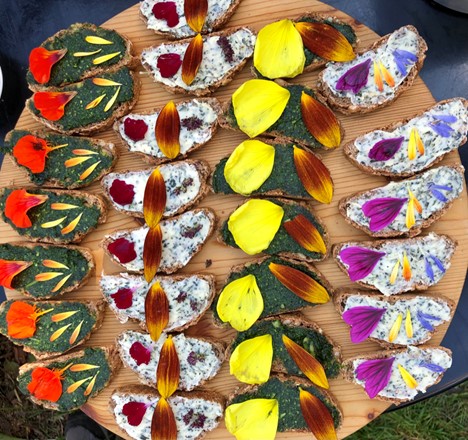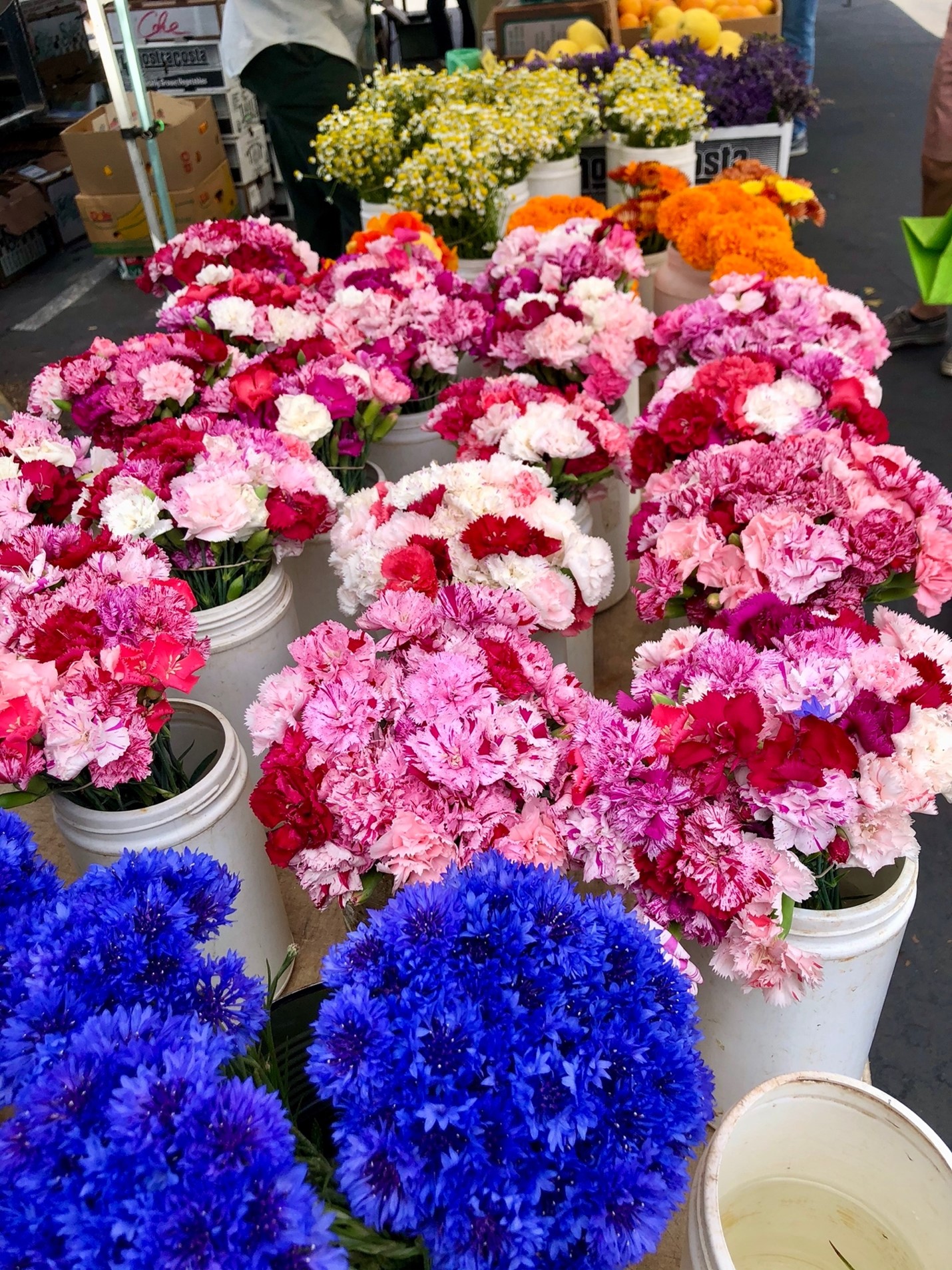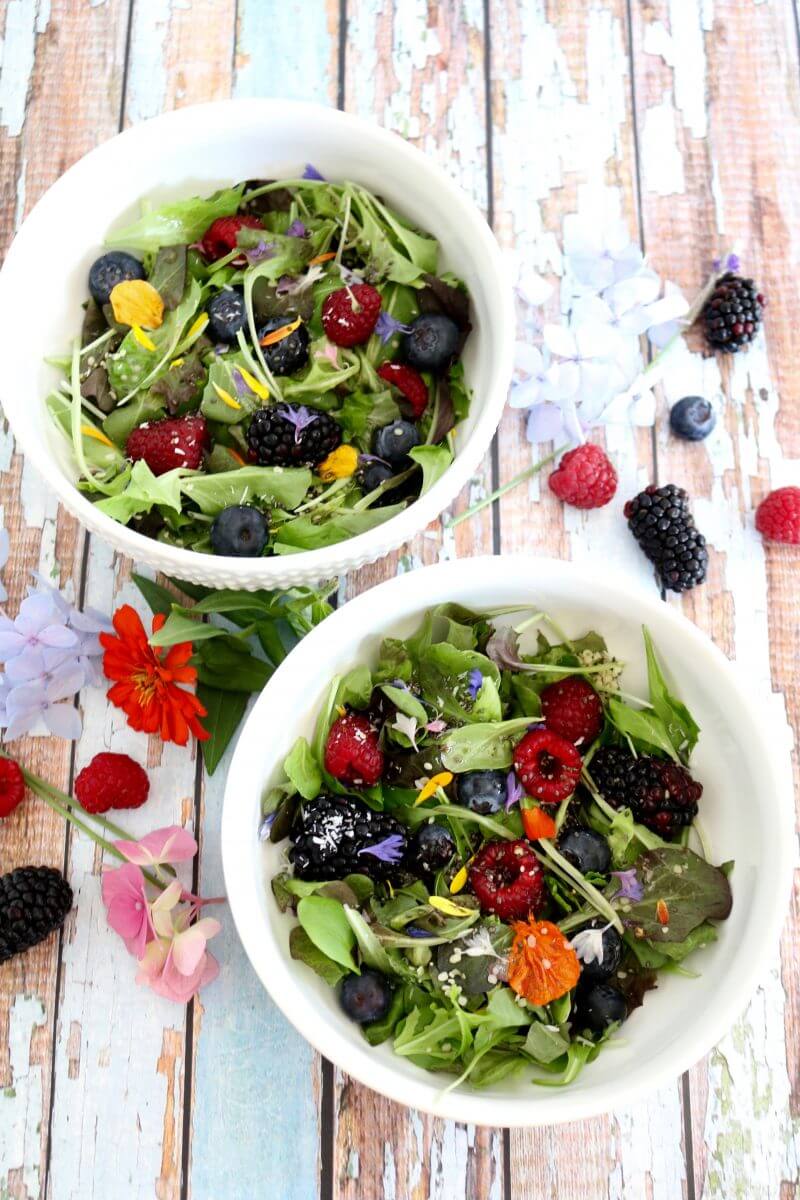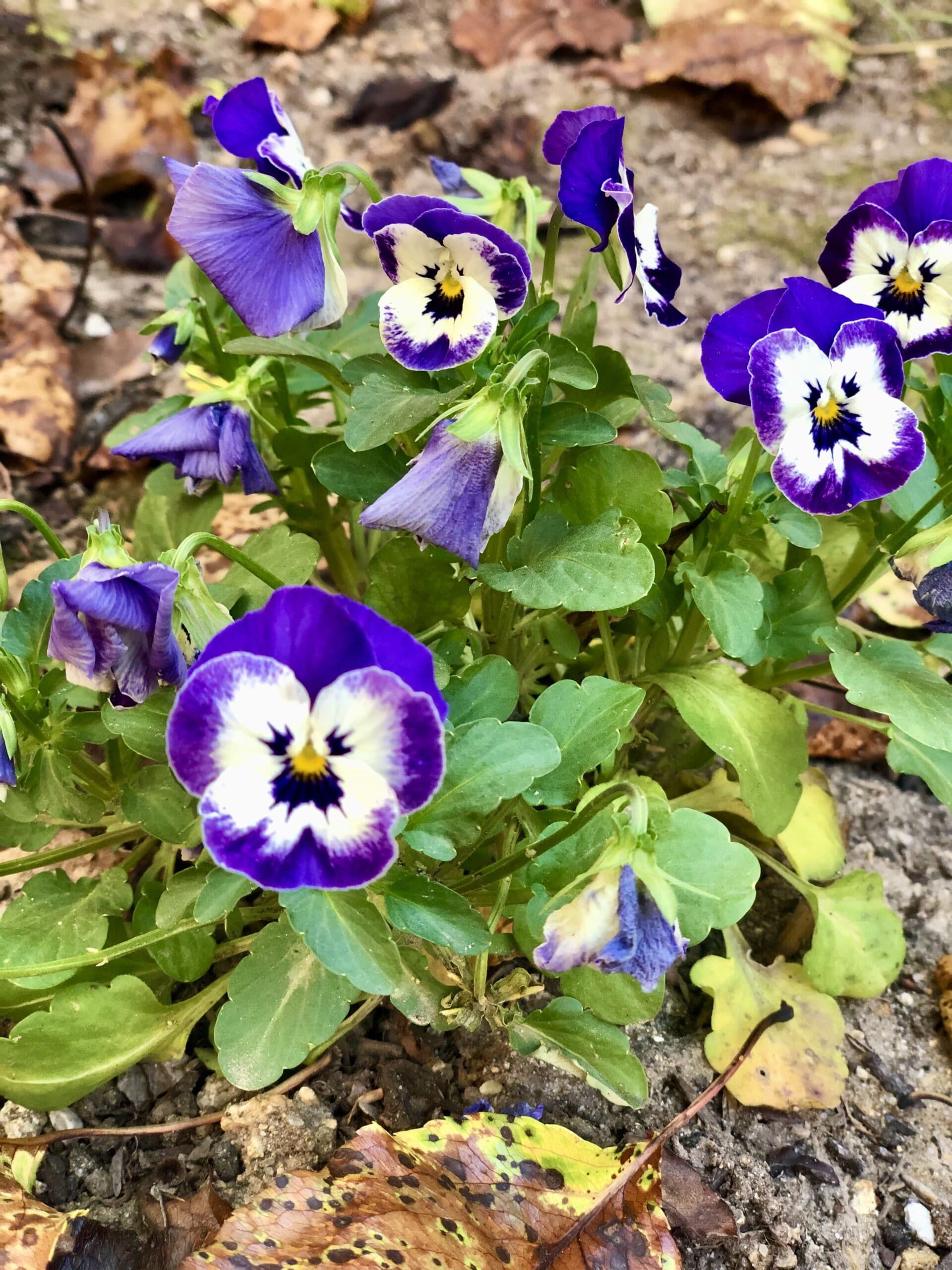Edible Flowers, Pretty and Tasty

Catch on to the edible flower trend, for beauty, health and good taste, with this expert guide on how to use edible flowers in cooking.
Edible flowers are everywhere, gracing the covers of glossy food magazines, stealing center stage on social media, and adding panache to restaurant entrees. Today’s fascination with edible flowers is definitely about glam, but it’s becoming more about the move toward local and sustainable food options, as more of us are growing our own fresh produce and are getting more adventurous with our cooking ingredients. Flowers add color, texture, flavor, nutrition, and vibrancy to any dish, not to mention enlivened conversation! Sharon loves to use edible flowers, such as pansies, violets, nasturtium, bachelor’s button, lavender, roses, and carnation, in many of her recipes, which she grows in her own garden.

The blooming trend can be traced back in human history for thousands of years to the Romans, Chinese, Middle Eastern and Indian cultures, and flower cookery was especially popular in Victorian times when flowers such as violets, primroses, and nasturtiums were common in salads, pickled for winter storage, candied for special occasion garnishes, and used medicinally. In fact, many cultures we’ve observed first hand the use of edible flowers, such as Thailand’s fondness for butterfly pea flowers in drinks and desserts and the Italian Alp’s use of alpine wild flowers in salads. Today, edible flowers are as popular as ever, thanks to their standout beauty in food photography and presentation.


Nutrition Power in Posies
Flowers are plants, so they contain vitamins, including vitamins A and C, niacin and riboflavin, minerals, such as calcium, iron, and potassium, and other nutrients including health protective plant compounds, including those known as carotenoids and flavonoids which are linked with many health benefits. Overall, the deeper the color of the flower (or vegetable or fruit), the higher the concentration of these powerful compounds. While we still tend to mostly enjoy edible flowers as a garnish or sparingly in dishes, it’s unlikely they will be a significant contributor to anyone’s daily nutrient intake, but they are a healthy way to add flair to food. Many edible flowers—lavender, dandelion, chamomile, hibiscus—have also been consumed as tea for enjoyment and medicinally for centuries and are well worth a try for specific benefits, such as reducing anxiety in the case of lavender and chamomile.

Are They Safe to Eat?
We already eat many flowers unbeknownst to us, like broccoli and cauliflower heads, capers and saffron, but for flowers that are truly unfamiliar, be positive they are edible, as some flowers are poisonous. Only the petals are ingested in most flowers, with the exception of some flowers, including pansies, violas and Johnny-jump-ups, but generally, the interior parts such as pistils and stamens are removed before eating. Many more flowers are unsafe to eat than safe, so if there’s any doubt, consult a credible reference such as the AMA Handbook of Poisonous and Injurious Plants, published by the American Medical Association.
It’s important to know not only that a flower is safe, but how it was grown. Never eat flowers exposed to pesticides or other chemicals which may include flowers harvested roadside, those grown in gardens fertilized with untreated manure, or those from florists, nurseries, or garden centers which are not grown for consumption and may have been treated by pesticides not labeled for food crops. Fortunately, organically grown edible flowers are becoming more common in the produce section of grocery stores, at farmers markets, specialty stores, and online. And you can grow edible flowers in your own garden, using caution not to apply synthetic pesticides or fertilizers. In fact, some edible flowers may come in unexpected ways! Sharon loves to use herb and vegetable plants that have gone to flower in her cooking and food styling, such as citrus, tomatoes, chives, cilantro, basil, and squash.

Cooking with Blooms
Show-stopping beauty is what makes edible blooms so appealing—at least at first. Adorn your favorite plant-based dishes with a garnish of posies from every color palate—shades and combinations of white, yellow, orange, red, blue, purple, and black. Make them that special touch that catches the eye, picks up a shade in your dish or provides contrast to it. I love to garnish with the flowers of ingredients that are in the dish, such as a long, lavender sprig on a dessert I’ve flavored with lavender or chive flowers on a veggie sauté with chives. But there’s much more to Mother Nature’s eye candy.
Culinary trial is important when it comes to flower cookery. Because of their delicate tastes—and don’t forget about their subtle scents—they can be easily overpowered by too many ingredients or those with strong flavors and aromas. Sample different varieties to learn their flavor profiles. Herb flowers, like lavender, thyme, and basil, taste similar to the leaves, but tend to be spicier. Fruit flowers, like apple, elderberry and citrus blossoms, range from floral, sweet, and yes, citrusy. Other blooms cover a wide spectrum of flavors. Sunflowers taste a bit like artichoke, tulips taste of cucumber, and roses range from fruity to spicy. They can be used fresh, dried, added to a cooked dish after the heating component, preserved, and added to cocktails. Try pairing sweet or floral scented blossoms with a dessert or cool drink or peppery nasturtiums with a salad.

Grow Your Own
Like most of nature’s bounty, edible flowers taste and look best soon after harvest. Growing your own is the surest way to have them on hand whenever you need them. Even if don’t you harvest them all for food, they are beautiful accents to your garden and flower arrangements too. You may already have edible flowers in your herb garden and on fruit trees to try!
Pick flowers in the early morning when their water content is highest. Shake to free of hidden insects before washing in a bowl or sink of cool water. Drain and dry thoroughly on an absorbent towel before use. Preserve whole flowers refrigerated in a glass of water overnight or seal in plastic with a damp paper towel up to a week. Ice water will revitalize limp blossoms. Add them to your dish just before serving.

Common Edible Flowers
Here’s a small sampling of some of the more common edible flowers to bring into your kitchen.
| Edible Flower | Edible Parts | Taste | Color | How to Enjoy |
| Calendula | Petals | Saffron-like, spicy, tangy | Golden, orange, yellow | Add color and flavor to fresh salads and sautéed in cooked dishes like soups, pasta |
| Dandelion | Flower, leaves, and roots | Young blooms are honey-like, older are bitter | Yellow | Raw or steamed/sautéed, combined with leaves, tea |
| Herb Flowers (basil, chives, cilantro, dill, fennel, garlic, and more) | Flowers and leaves | Generally similar to leaves, often stronger | Varies—white, yellow, purple… | Garnish on dishes which contain the herb, garnish salads, soups, pastas |
| Nasturtium | Flowers and leaves | Mildly peppery with mustard undertones, similar to watercress | Red, orange, yellow, pink, white | Garnish salads, sides with peppery petals, puree leaves with nuts and oil for pesto. |
| Pansy | Flowers | Mild, mint-like | Blue-purple with yellow center | Garnish for appetizers, desserts, cocktails, salads |
| Rose | Petals | Fruity (strawberry or green apple), spicy, depending on variety. Darker varieties have stronger flavor. | Varies—white, yellow, pink, red… | Garnish desserts, salads, frozen in ice cubes, syrups |
| Sunflowers | Petals, unopened flower buds, seeds | Artichoke- in the bud stage; when flowers open, use petals | Yellow, gold, cream, pink, rose, brown | Buds can be steamed, sprinkle petals over salads, sautéed veggies, whole grains sides, pasta |

Written by Lori Zanteson
Images by Sharon Palmer, MSFS, RDN
Main Image: Flower and pesto sandwiches, South Tyrol, Italy, by Sharon Palmer, MSFS, RDN
Learn more about edible flowers in these blogs:
Try edible flowers in these recipes:
Lavender Chai Latte
Lavender Blueberry Granola
Vegan Lavender Almond Cookies




[…] oranges, and olives in larger pots, to herbs like thyme and rosemary in smaller herb pots, to edible flowers like lavender, nasturtium and calendula in pretty floral pots, to powerful veggie producers like […]